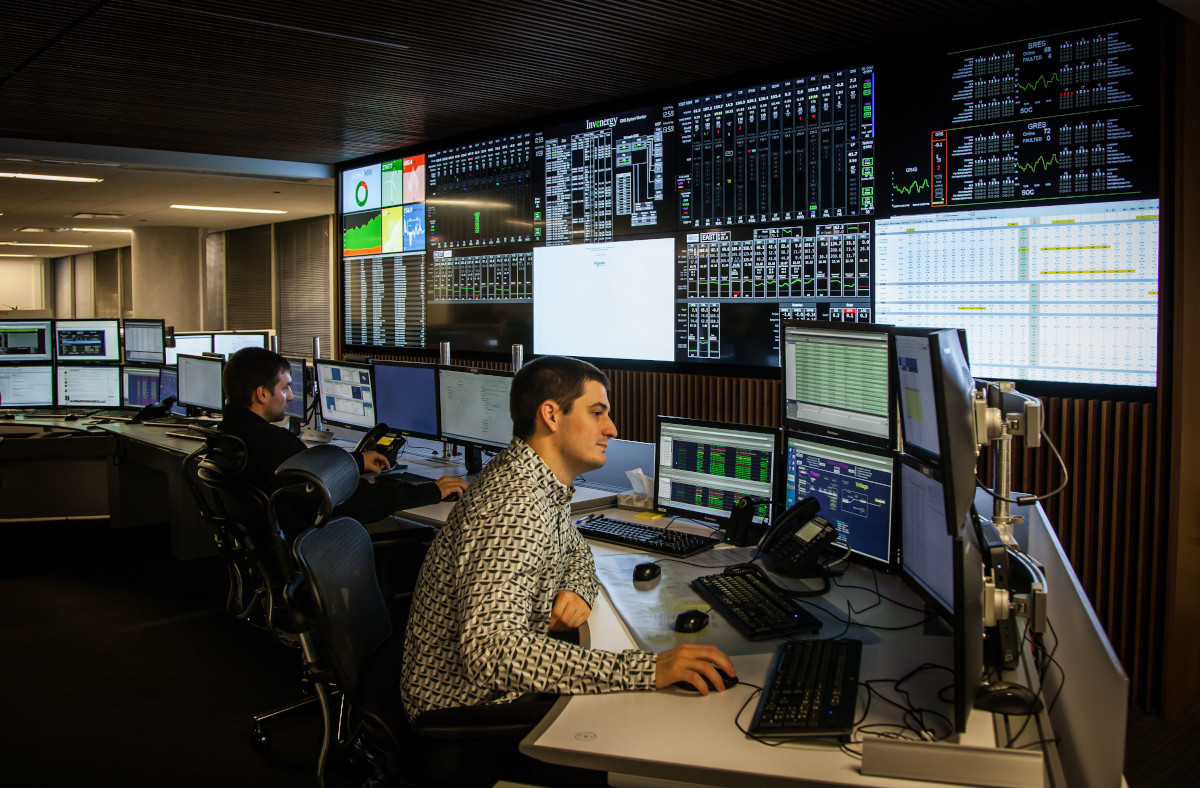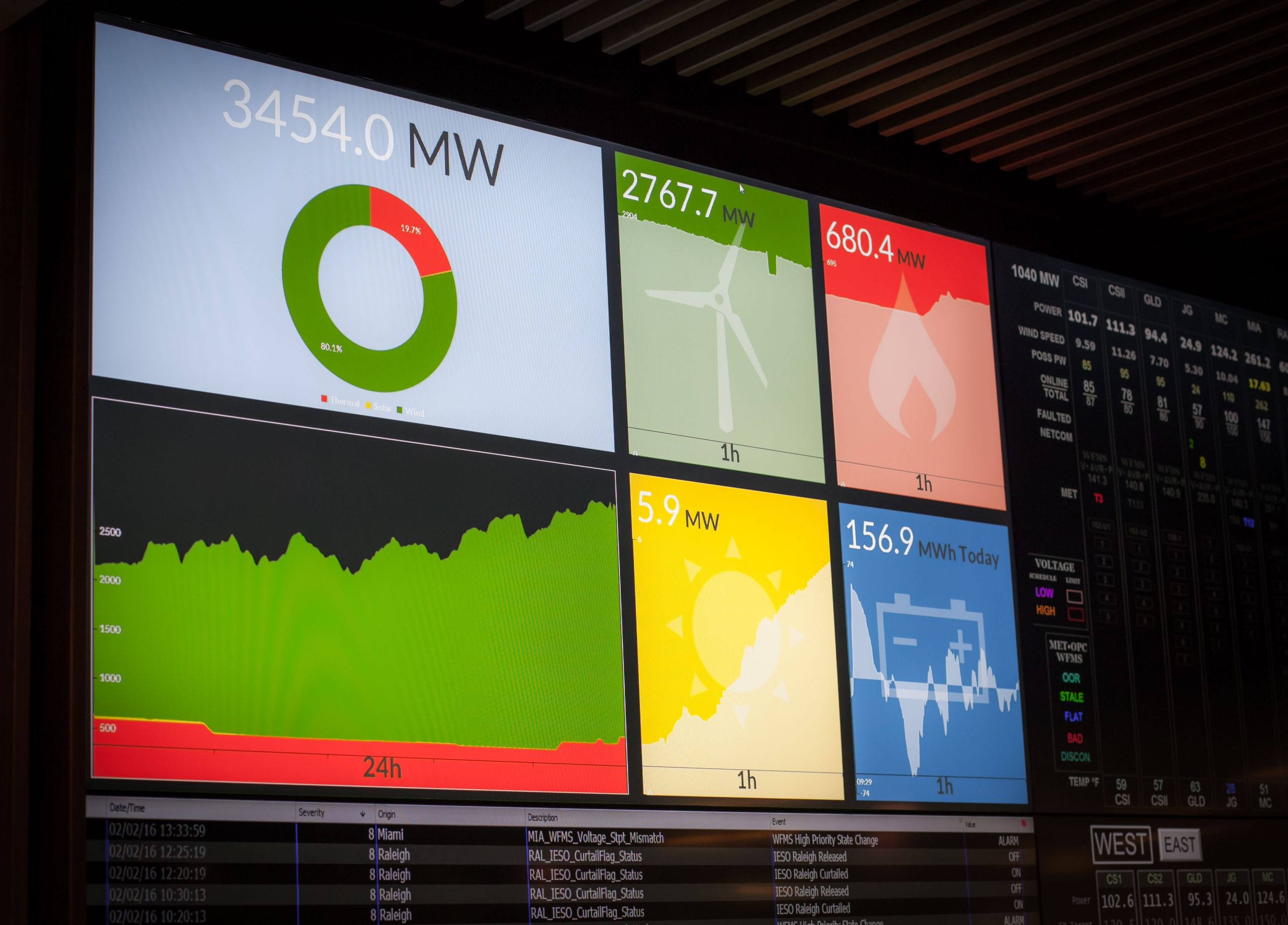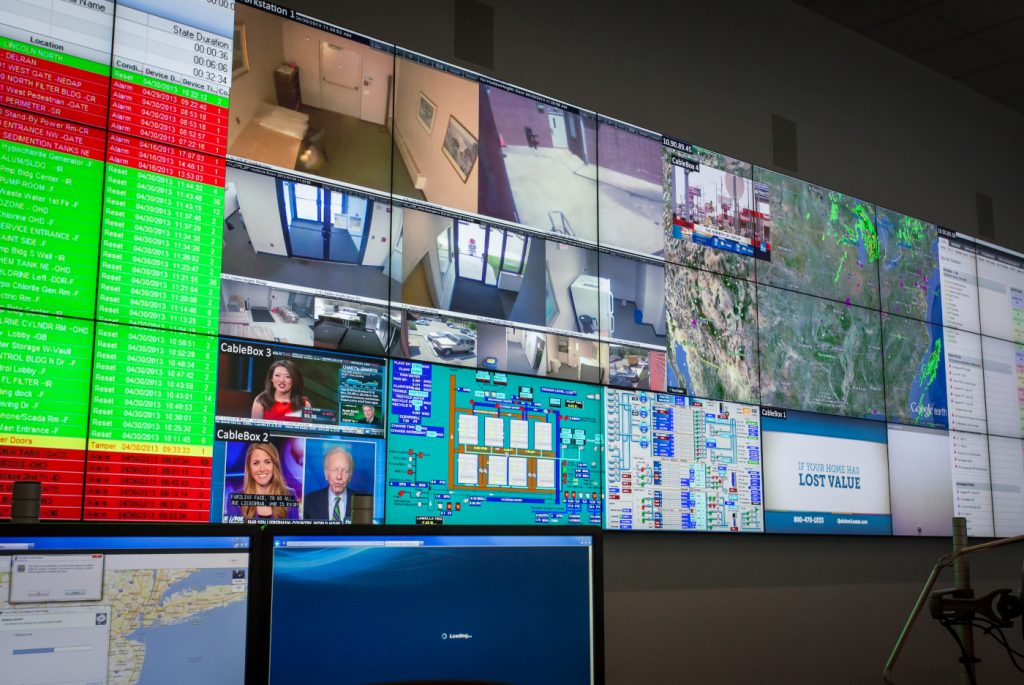Weighing the merits of LED videowalls versus LCD-based ones when choosing videowall technology for control-room environments.
Receive information, analyze and collaborate to maintain the status quo, respond to emergent situations— these are the realities of control-room environments. The challenge lies in effectively visualizing real-time intelligence for efficient monitoring, awareness and communication. When determining the best technology to support those who are managing and monitoring operational continuity and responding to ongoing or impending breaches, it’s critical to consider where and how information is displayed.
When you have to create a focal point of information for a control-room team, particularly in a large format that allows operators to view multiple feeds of content clearly and simultaneously, videowalls are the prevalent solution. Two primary categories of solid-state technology used for control-room videowalls are LCD panels and LED tiles.
Although LCD panels and LED tiles are both excellent choices for use in videowall displays, determining which category is most appropriate for any given application or user depends on the top priorities for that application. Some of the most common priorities for control-room displays are as follows: viewing angle, brightness, brightness uniformity, brightness and color balance, contrast, seamlessness, image quality, viewing distance, footprint, initial cost and total cost of ownership (TCO), ease of deployment, high availability, serviceability and security.
What follows is a discussion of which technology is best for various attributes, with the goal of helping you choose the best option for your application.
Viewing Angle
Most videowall solutions are designed to maximize the view of information when the user is not directly in front of the display screen. However, as you move further off-angle from the display, brightness and color might be affected to varying degrees. It is important to verify the product’s performance specifications in advance so that
you can understand how viewing angles will affect a person’s interaction with the content. For LCD panels, visibility can vary based on the manufacturer. With regard to LED videowalls, there are no hard-and-fast rules; nevertheless, there are recommended optimal-viewing distances depending on the pixel pitch. Each solution can provide very good viewing characteristics, but all this depends on the design requirements set for the application. LCD technology has very good viewing angles, as well, but the brightness difference off-axis makes LED superior to LCD. This can increase the image sweet spot.

Brightness
Brightness requirements for videowall applications vary, depending on the application. Higher brightness might be necessary to improve overall contrast in environments in which ambient light is very high (e.g., rooms with walls of windows). However, for many control-room applications, a videowall that’s too bright can be a downside, especially if people are working in front of the videowall for a full shift. If a videowall is very bright, people might suffer from headaches or eyestrain over time. On the other hand, however, if a videowall isn’t bright enough, contrast will likely be too low, making it difficult to discern information as quickly and accurately as required. For typical control-room applications, a nominal brightness of about 500 nits is quite adequate and reasonable.
Selecting an LED or LCD display that has a higher brightness level (700 nits up to 1,000 nits) can be advantageous for some control-room applications. If you start with a higher-brightness display, you can reduce the brightness to a level that’s acceptable to the ambient-light environment and gain a number of benefits, including the following:
- Power efficiency: Running a 700-nit panel at 500 nits draws less power than running a 500-nit panel at 500 nits.
- Extended life: Reduced power lowers the thermal profile on the display, and it can extend the life of the LEDs or LED backlight, prevent failures and reduce cooling requirements.
- Improved black and low-level gray on LCD panels.
If you’re looking for brightness and uniformity across a tiled array, LED tiles offer the best performance for those attributes. Another benefit of LED-tiled videowalls is their ability to display content clearly, even in high-ambient-light environments. This is a consequence not only of the high brightness typical of LED tiles but also of high contrast ratios. The result is an outstanding perceived level of black that results in a high-contrast image, even when indoor-ambientlight levels are elevated.
Brightness Uniformity
Brightness uniformity contributes to a videowall’s seamless appearance. For LED displays, uniformity is typically 97 percent or better, depending on the manufacturer’s specification for its LED chip. Current LCD videowall products continue to improve in brightness uniformity, typically achieving 85 percent to 90 percent of the American National Standards Institute (ANSI) standard. It’s important for LED videowalls to be calibrated accurately, as this influences brightness uniformity. Generally, LEDs can have brightness variation of 20 percent or more. Because LCD-panel uniformity isn’t measured right to the edge of the bezel on LCD panels, it’s recommended that you test and view the solution in advance with content that’s the same as, or similar to, what you will display. This will help to ensure the uniformity meets expectations.

Brightness & Color Balance
When multiple displays are used together in a tiled display array or videowall, it’s critical that brightness and color from display to display start out well matched and remain that way over time. Our eyes are very sensitive even to subtle differences in color across multiple displays; therefore, videowall-display products include capabilities
so they can finely adjust the color for best matching performance. However, over time, color or brightness might slightly change or drift, thus necessitating readjustment.
Some LCD panels and LED displays offer automatic-calibration features that ensure the closest color match and uniformity both at installation and over time, as brightness changes with age. LED videowalls offer a large achievable color gamut, which refers to the range and purity of the colors that a display can reproduce. The red, green and blue LEDs used in LED videowalls all emit a much narrower range of wavelengths than a broad-spectrum, white-light source like a lamp. This produces more deeply saturated colors and increases the range of reproducible colors. Bestin-class LED videowalls also offer image-processing capabilities to maintain image quality even at low brightness levels.
Conclusion
Having considered the performance of each solution in relation to the most common control-room priorities, you should now have a clearer understanding of which solution will work best for your control room. Once you narrow down which technology makes the most sense, we recommend doing in-depth research on the top brands for your solution of choice. If you have any questions or if you would like some help in selecting brands to explore, connect with a consultant. Resources are available to connect you with a network of experts who will be happy to help you work through the final steps of your procurement process.
Want to keep reading? You can get a more complete version of this whitepaper, which reviews additional considerations, including contrast, seamlessness, image quality, viewing distance, footprint, initial cost and TCO, ease of deployment, high availability, serviceability and security. Just visit www.christiedigital.com/solutions/control-rooms.
To read more from Sound & Communications, click here.
